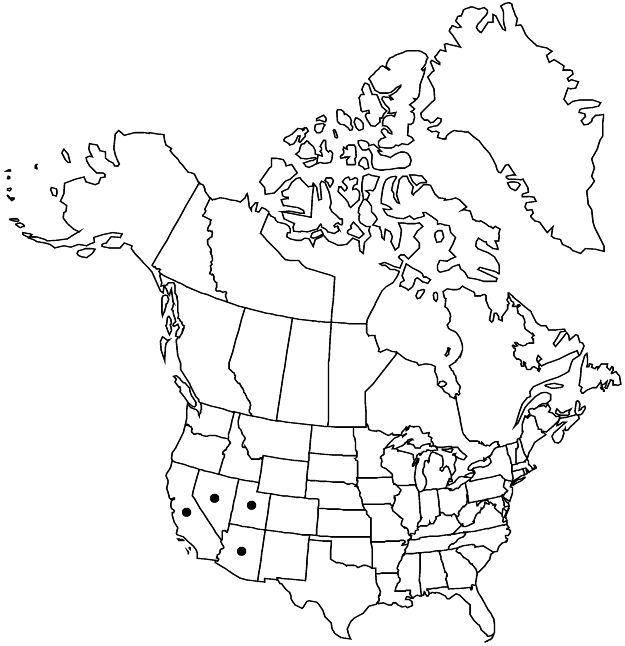Croton californicus
in A. P. de Candolle and A. L. P. P. de Candolle, Prodr. 15(2): 691. 1866.
Subshrubs or shrubs, 4–11 dm, dioecious. Stems loosely branched, stellate-lepidote. Leaves not clustered; stipules absent; petiole 1–3.5(–4.5) cm, usually less than 1/2 blade length, glands absent at apex; blade elliptic to narrowly oblong, 2–5.5(–7) × 0.8–2(–2.5) cm, usually more than 2 times as long as wide, base obtuse, margins entire, apex obtuse to rounded, abaxial surface light green, adaxial surface darker green, both stellate-lepidote. Inflorescences unisexual, racemes or thyrses; staminate 0.5–3.5(–10) cm, flowers 3–8(–20); pistillate 0.5–1 cm, flowers 1–6. Pedicels: staminate 1–5.5(–7) mm, pistillate to 1 mm (1–3 mm in fruit). Staminate flowers: sepals 5, 1 mm, abaxial surface stellate-lepidote; petals 0; stamens 10–15. Pistillate flowers: sepals 5, equal, 2 mm, margins entire, apex incurved, abaxial surface stellate-lepidote; petals 0; ovary 3-locular; styles 3, 2–2.5 mm, 4-fid, terminal segments usually 12. Capsules 6–8 × 5–7 mm, smooth; columella 3-winged. Seeds 4–5.5 × 3.5–5.5 mm, dull. 2n = 28.
Phenology: Flowering Feb–Oct.
Habitat: Sandy soils, sage scrub, dunes, washes.
Elevation: 0–900 m.
Distribution

Ariz., Calif., Nev., Utah, Mexico (Baja California, Sinaloa).
Discussion
Selected References
None.